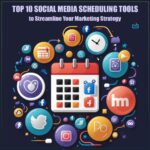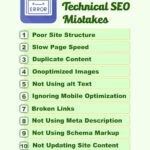Unlocking Success with Keyword Planner in Google Ads: Your Comprehensive Guide
In the ever-evolving landscape of digital marketing, staying ahead of the competition and reaching your target audience effectively is paramount. Enter the Google Ads Keyword Planner – a powerful tool designed to help advertisers find the right keywords, estimate traffic potential, and craft winning advertising campaigns. In this comprehensive guide, we will delve deep into the world of Keyword Planner in Google Ads, exploring its features, benefits, and how to harness its full potential.
1. What is Google Ads Keyword Planner?
Google Ads Keyword Planner is a free, indispensable tool within the Google Ads platform. It is designed to assist advertisers in discovering, refining, and selecting the most relevant keywords for their advertising campaigns. Whether you’re aiming to boost website traffic, generate leads, or increase conversions, Keyword Planner equips you with valuable insights to achieve your goals.
2. Why is Keyword Research Vital?
Before delving into the intricacies of Keyword Planner, it’s crucial to understand why keyword research is a fundamental component of successful digital advertising:
- Relevance: Selecting the right keywords ensures that your ads are displayed to users genuinely interested in your products or services.
- Cost-Efficiency: Well-researched keywords help you allocate your budget wisely by targeting valuable traffic.
- Competitive Edge: A robust keyword strategy can set you apart from competitors and improve your ad ranking.
- Improved Quality Score: Relevant keywords lead to higher Quality Scores, which, in turn, can reduce your Cost-Per-Click (CPC).
In essence, keyword research is the foundation upon which successful Google Ads campaigns are built.
3. How to Access Google Ads Keyword Planner
Let’s start by discussing how to access Keyword Planner in Google Ads:
- Log In: Sign in to your Google Ads account (or create one if you haven’t already).
- Navigate to Tools & Settings: Click on the wrench icon (Tools & Settings) located in the upper-right corner of your Google Ads dashboard.
- Select ‘Keyword Planner’: In the Planning section, click on ‘Keyword Planner.’
4. Exploring the Interface
Upon entering the Keyword Planner, you’ll be greeted by a user-friendly interface divided into two primary sections:
- Discover New Keywords: This section allows you to find new keyword ideas based on terms, phrases, or your website’s landing page. It also provides historical statistics and forecasting data.
- Get Metrics and Forecasts: Here, you can access detailed metrics for a list of keywords, including search volume, competition level, and bid estimates. It’s particularly useful for assessing the potential performance of specific keywords.
5. Finding New Keywords
One of the core functions of Keyword Planner is to help you discover new keywords. Here’s how to use it effectively:
- Start with a Seed Keyword: Begin by entering a seed keyword or phrase relevant to your business. For instance, if you’re in the fitness industry, ‘home workouts’ could be your starting point.
- Filter by Location and Language: Specify your target location and language to refine your keyword suggestions for a specific audience.
- Review Keyword Ideas: Keyword Planner will generate a list of keyword ideas related to your seed keyword. Take note of keywords with high relevance to your campaign goals.
- Analyze Metrics: Explore metrics like search volume, competition, and bid estimates to evaluate the potential of each keyword.
- Add to Your Plan: To include a keyword in your campaign, click the ‘Add to Plan’ button. This action accumulates your selected keywords into a keyword plan.
6. Understanding Keyword Metrics
Keyword Planner provides several essential metrics to help you assess the suitability of keywords for your campaign:
- Search Volume: Indicates how frequently a keyword is searched for on Google within your specified location and language.
- Competition: Ranges from low to high, signifying the level of competition among advertisers for that keyword. High competition keywords are often more expensive.
- Bid Estimates: An estimate of the bid amount required to achieve a top-of-page ad placement for a particular keyword.
- Top of Page Bid (Low Range): The lower bid estimate for a top-of-page ad placement.
- Top of Page Bid (High Range): The higher bid estimate for a top-of-page ad placement.
7. Filtering and Refining Keywords
Keyword Planner offers multiple options for filtering and refining your keyword list:
- Keyword Filter: Apply filters to narrow down keywords based on specific criteria like search volume, competition, or bid estimates.
- Negative Keywords: Add negative keywords to exclude irrelevant search queries and improve targeting.
- Keyword Options: Use the ‘Keyword Options’ menu to adjust keyword match types (broad match, phrase match, exact match) to fine-tune your targeting.
8. Grouping Keywords
To organize your keywords effectively, consider grouping them into ad groups based on their relevance and intent. Grouping helps you create tailored ad campaigns and ad copy that resonate with your target audience. Keyword Planner’s ‘Add to Plan’ feature simplifies this process.
9. Creating Keyword Plans
Keyword Planner allows you to compile selected keywords into keyword plans. These plans help you visualize and structure your ad campaigns. Here’s how to create a keyword plan:
- Select Your Keywords: After adding keywords to your plan, click on ‘Review Plan.’
- Group Keywords: Organize keywords into ad groups within your plan.
- Adjust Bids: Set bids for your keywords or ad groups to align with your budget and campaign goals.
- Save Your Plan: Click ‘Save Plan’ to store your keyword plan for future reference or campaign implementation.
10. Estimating Traffic Potential
One of the most valuable aspects of Keyword Planner is its ability to estimate traffic potential. This feature helps you understand the expected performance of your selected keywords. By analyzing forecasts, you can make informed decisions about budget allocation and campaign objectives.
11. Competitor Analysis
Keyword Planner isn’t just about finding keywords for your own campaigns; it can also provide insights into your competitors’ keyword strategies. By entering your competitors’ websites or landing pages into the tool, you can discover keywords they’re targeting. Analyzing this data can help you identify gaps in your own keyword strategy and find opportunities to outrank competitors.
12. Utilizing Historical Metrics
Keyword Planner offers historical data, including search volume trends over time. Examining historical metrics can assist you in identifying seasonality trends, optimizing bid strategies, and making informed decisions about when to launch campaigns.
13. Exporting and Sharing Data
Once you’ve compiled your keyword list and created keyword plans, Keyword Planner allows you to export this data for easy sharing and implementation. Export options include CSV files and Google Sheets integration, making it simple to collaborate with team members or agencies.
14. Integrating with Google Ads
Keyword Planner seamlessly integrates with Google Ads, allowing you to import your keyword plans directly into your ad campaigns. This integration streamlines the process of translating your keyword research into actionable advertising strategies.
15. Tips and Best Practices
To make the most of Google Ads Keyword Planner, consider the following tips and best practices:
- Regularly Review and Update: Keyword trends change over time. Keep your keyword research up to date to stay competitive.
- Broaden Your Horizons: Don’t limit yourself to a few keywords. Explore a wide range of related terms to capture a broader audience.
- Consider Long-Tail Keywords: Long-tail keywords are often less competitive and can be highly relevant to specific niches.
- Think Like Your Audience: Put yourself in the shoes of your target audience. What terms would they use to find your products or services?
- Segment Your Keywords: Organize your keywords into tightly themed ad groups for more relevant ad copy.
- Use Negative Keywords Wisely: Exclude irrelevant search terms with negative keywords to improve ad targeting and reduce wasted ad spend.
- Test and Optimize: Continuously test different keywords and bid strategies to optimize your campaigns over time.
16. Case Studies
Let’s explore a couple of real-world case studies that showcase the power of Google Ads Keyword Planner:
Case Study 1: E-Commerce Store
Objective: An e-commerce store selling fitness equipment aims to increase online sales.
Keyword Research: Using Keyword Planner, the team identifies high-volume keywords related to fitness equipment, such as ‘home gym,’ ‘dumbbells,’ and ‘treadmills.’
Keyword Grouping: Keywords are grouped into ad groups based on product categories, allowing for targeted ad campaigns.
Results: By optimizing ad campaigns based on Keyword Planner insights, the e-commerce store experiences a 30% increase in online sales within three months.
Case Study 2: Local Service Business
Objective: A local landscaping service wants to generate more leads in its service area.
Keyword Research: Keyword Planner helps identify location-specific keywords like ‘landscaping services in [City]’ and ‘lawn maintenance [City].’
Keyword Plans: A keyword plan is created for each target location, with relevant keywords grouped into ad groups.
Results: By implementing location-specific ad campaigns with keywords from Keyword Planner, the landscaping service witnesses a 40% increase in lead generation within two months.
17. Common Mistakes to Avoid
To ensure success with Google Ads Keyword Planner, steer clear of these common mistakes:
- Ignoring Negative Keywords: Failing to use negative keywords can result in irrelevant clicks and wasted ad spend.
- Overlooking Long-Tail Keywords: Long-tail keywords can be highly valuable but are often underestimated.
- Neglecting to Analyze Metrics: Don’t blindly select keywords without assessing metrics like competition and bid estimates.
- Not Updating Keyword Lists: Keywords trends change, so regularly update your keyword lists to stay competitive.
18. The Future of Keyword Planning
As technology and user behavior evolve, so does the world of keyword planning. Predicting future trends in keyword research involves keeping an eye on developments in voice search, artificial intelligence, and semantic search. Keyword Planner is likely to adapt and incorporate new features to accommodate these changes.
19. Frequently Asked Questions (FAQs)
Let’s address some common queries about Google Ads Keyword Planner:
Q1: Is Google Ads Keyword Planner free to use?
- A: Yes, Keyword Planner is a free tool available to Google Ads users.
Q2: Can I use Keyword Planner without running Google Ads campaigns?
- A: You can access Keyword Planner without running campaigns, but having an active Google Ads account is necessary.
Q3: What’s the difference between search volume and competition metrics?
- A: Search volume indicates how often a keyword is searched for, while competition assesses how many advertisers are bidding on the keyword.
Q4: Should I focus on high-volume keywords only?
- A: Not necessarily. High-volume keywords often have high competition. Consider a mix of high- and low-volume keywords to diversify your targeting.
Q5: Can Keyword Planner help with local businesses?
- A: Absolutely. You can specify your location and target local keywords to attract nearby customers.
Q6: How often should I update my keyword research?
- A: Regular updates are essential to stay competitive and adapt to changing trends. Quarterly reviews are a good starting point.
Q7: Can I target different locations with Keyword Planner?
- A: Yes, you can specify different locations and languages to tailor your keyword research.
Q8: Does Keyword Planner provide historical keyword data?
- A: Yes, it offers historical data, including search volume trends over time.
Q9: Are there alternatives to Google Ads Keyword Planner?
- A: While many keyword research tools exist, Keyword Planner is one of the most comprehensive and widely used options.
Q10: Can I use Keyword Planner for other search engines like Bing or Yahoo? – A: Keyword Planner is specific to Google Ads, but other platforms offer similar keyword research tools.
Related Articles
20. Conclusion
In the ever-competitive world of digital advertising, Google Ads Keyword Planner emerges as an invaluable ally. With its ability to uncover lucrative keywords, assess competition, and forecast campaign performance, this tool empowers advertisers to make data-driven decisions and craft winning advertising strategies.
From small local businesses to global e-commerce giants, every digital advertiser can benefit from the insights provided by Keyword Planner. By mastering this tool, you unlock the potential to reach your target audience effectively, optimize your ad spend, and ultimately achieve your digital marketing objectives.
As you embark on your journey with Google Ads Keyword Planner, remember that keyword research is not a one-time task; it’s an ongoing process. Stay informed about industry trends, continuously update your keyword lists, and test different strategies to ensure your campaigns remain competitive and successful in the ever-evolving digital landscape.




